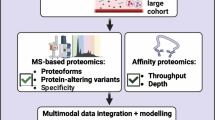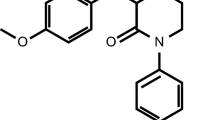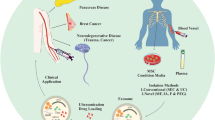Abstract
Phosphohydrolysis of extracellular ATP and ADP is an essential step in purinergic signaling that regulates key pathophysiological processes, such as those linked to inflammation. Classically, this reaction has been known to occur in the pericellular milieu catalyzed by membrane bound cellular ecto-nucleotidases, which can be released in the form of both soluble ecto-enzymes as well as being associated with exosomes. Circulating ecto-nucleoside triphosphate diphosphohydrolase 1 (NTPDase 1/CD39) and adenylate kinase 1 (AK1) activities have been shown to be present in plasma. However, other ecto-nucleotidases have not been characterized in depth. An in vitro ADPase assay was developed to probe the ecto-enzymes responsible for the ecto-nucleotidase activity in human platelet-free plasma, in combination with various specific biochemical inhibitors. Identities of ecto-nucleotidases were further characterized by chromatography, immunoblotting, and flow cytometry of circulating exosomes. We noted that microparticle-bound E-NTPDases and soluble AK1 constitute the highest levels of ecto-nucleotidase activity in human plasma. All four cell membrane expressed E-NTPDases are also found in circulating microparticles in human plasma, inclusive of: CD39, NTPDase 2 (CD39L1), NTPDase 3 (CD39L3), and NTPDase 8. CD39 family members and other ecto-nucleotidases are found on distinct microparticle populations. A significant proportion of the microparticle-associated ecto-nucleotidase activity is sensitive to POM6, inferring the presence of NTPDases, either −2 or/and −3. We have refined ADPase assays of human plasma from healthy volunteers and have found that CD39, NTPDases 2, 3, and 8 to be associated with circulating microparticles, whereas soluble AK1 is present in human plasma. These ecto-enzymes constitute the bulk circulating ADPase activity, suggesting a broader implication of CD39 family and other ecto-enzymes in the regulation of extracellular nucleotide metabolism.






Similar content being viewed by others
References
Eltzschig HK, Sitkovsky MV, Robson SC (2012) Purinergic signaling during inflammation. N Engl J Med 367:2322–2333
Longhi MS, Robson SC, Bernstein SH, Serra S, Deaglio S (2013) Biological functions of ecto-enzymes in regulating extracellular adenosine levels in neoplastic and inflammatory disease states. J Mol Med (Berlin) 91:165–172
Deaglio S, Robson SC (2011) Ectonucleotidases as regulators of purinergic signaling in thrombosis, inflammation, and immunity. Adv Pharmacol 61:301–332
Jacob F, Perez Novo C, Bachert C, Van Crombruggen K (2013) Purinergic signaling in inflammatory cells: P2 receptor expression, functional effects, and modulation of inflammatory responses. Purinergic Signal 9:285–306
Jorgensen S (1956) Breakdown of adenine and hypoxanthine nucleotides and nucleosides in human plasma. Acta Pharmacol Toxicol (Copenh) 12:294–302
Coade SB, Pearson JD (1989) Metabolism of adenine nucleotides in human blood. Circ Res 65:531–537
Yegutkin GG, Samburski SS, Jalkanen S (2003) Soluble purine-converting enzymes circulate in human blood and regulate extracellular ATP level via counteracting pyrophosphatase and phosphotransfer reactions. FASEB J 17:1328–1330
Yegutkin GG, Wieringa B, Robson SC, Jalkanen S (2012) Metabolism of circulating ADP in the bloodstream is mediated via integrated actions of soluble adenylate kinase-1 and NTPDase1/CD39 activities. FASEB J 26:3875–3883
Robson SC, Sevigny J, Zimmermann H (2006) The E-NTPDase family of ectonucleotidases: structure function relationships and pathophysiological significance. Purinergic Signal 2:409–430
Zimmermann H, Zebisch M, Strater N (2012) Cellular function and molecular structure of ecto-nucleotidases. Purinergic Signal 8:437–502
Eckle T, Fullbier L, Wehrmann M, Khoury J, Mittelbronn M et al (2007) Identification of ectonucleotidases CD39 and CD73 in innate protection during acute lung injury. J Immunol 178:8127–8137
Colgan SP, Eltzschig HK (2012) Adenosine and hypoxia-inducible factor signaling in intestinal injury and recovery. Annu Rev Physiol 74:153–175
Friedman DJ, Kunzli BM, YI AR, Sevigny J, Berberat PO et al (2009) From the cover: CD39 deletion exacerbates experimental murine colitis and human polymorphisms increase susceptibility to inflammatory bowel disease. Proc Natl Acad Sci U S A 106:16788–16793
Friedman DJ, Talbert ME, Bowden DW, Freedman BI, Mukanya Y et al (2009) Functional ENTPD1 polymorphisms in African Americans with diabetes and end-stage renal disease. Diabetes 58:999–1006
Eltzschig HK, Eckle T (2011) Ischemia and reperfusion—from mechanism to translation. Nat Med 17:1391–1401
Banz Y, Beldi G, Wu Y, Atkinson B, Usheva A et al (2008) CD39 is incorporated into plasma microparticles where it maintains functional properties and impacts endothelial activation. Br J Haematol 142:627–637
ELA S, Mager I, Breakefield XO, Wood MJ (2013) Extracellular vesicles: biology and emerging therapeutic opportunities. Nat Rev Drug Discov 12:347–357
Schmelzle M, Splith K, Andersen LW, Kornek M, Schuppan D et al (2013) Increased plasma levels of microparticles expressing CD39 and CD133 in acute liver injury. Transplantation 95:63–69
Visovatti SH, Hyman MC, Bouis D, Neubig R, McLaughlin VV et al (2012) Increased CD39 nucleotidase activity on microparticles from patients with idiopathic pulmonary arterial hypertension. PLoS One 7:e40829
Muller CE, Iqbal J, Baqi Y, Zimmermann H, Rollich A et al (2006) Polyoxometalates—a new class of potent ecto-nucleoside triphosphate diphosphohydrolase (NTPDase) inhibitors. Bioorg Med Chem Lett 16:5943–5947
Wu Y, Sun X, Kaczmarek E, Dwyer KM, Bianchi E et al (2006) RanBPM associates with CD39 and modulates ecto-nucleotidase activity. Biochem J 396:23–30
Schneider CA, Rasband WS, Eliceiri KW (2012) NIH Image to ImageJ: 25 years of image analysis. Nat Methods 9:671–675
Kornek M, Popov Y, Libermann TA, Afdhal NH, Schuppan D (2011) Human T cell microparticles circulate in blood of hepatitis patients and induce fibrolytic activation of hepatic stellate cells. Hepatology 53:230–242
Yuana Y, Bertina RM, Osanto S (2011) Pre-analytical and analytical issues in the analysis of blood microparticles. Thromb Haemost 105:396–408
Thompson JD, Higgins DG, Gibson TJ (1994) CLUSTAL W: improving the sensitivity of progressive multiple sequence alignment through sequence weighting, position-specific gap penalties and weight matrix choice. Nucleic Acids Res 22:4673–4680
Arnold K, Bordoli L, Kopp J, Schwede T (2006) The SWISS-MODEL workspace: a web-based environment for protein structure homology modelling. Bioinformatics 22:195–201
Zebisch M, Krauss M, Schafer P, Strater N (2012) Crystallographic evidence for a domain motion in rat nucleoside triphosphate diphosphohydrolase (NTPDase) 1. J Mol Biol 415:288–306
Glaser F, Pupko T, Paz I, Bell RE, Bechor-Shental D et al (2003) ConSurf: identification of functional regions in proteins by surface-mapping of phylogenetic information. Bioinformatics 19:163–164
Stout JG, Kirley TL (1996) Control of cell membrane ecto-ATPase by oligomerization state: intermolecular cross-linking modulates ATPase activity. Biochemistry 35:8289–8298
Schulte am Esch J 2nd, Sevigny J, Kaczmarek E, Siegel JB, Imai M et al (1999) Structural elements and limited proteolysis of CD39 influence ATP diphosphohydrolase activity. Biochemistry 38:2248–2258
Uhlen M, Oksvold P, Fagerberg L, Lundberg E, Jonasson K et al (2010) Towards a knowledge-based Human Protein Atlas. Nat Biotechnol 28:1248–1250
Fausther M, Lecka J, Soliman E, Kauffenstein G, Pelletier J et al (2012) Coexpression of ecto-5′-nucleotidase/CD73 with specific NTPDases differentially regulates adenosine formation in the rat liver. Am J Physiol Gastrointest Liver Physiol 302:G447–459
Panayiotou C, Solaroli N, Karlsson A (2014) The many isoforms of human adenylate kinases. Int J Biochem Cell Biol 49C:75–83
Dzeja PP, Chung S, Terzic A (2007) In: Saks V (ed) Molecular system bioenergetics. Wiley-VCH, Weinheim
Choo HJ, Kim BW, Kwon OB, Lee CS, Choi JS et al (2008) Secretion of adenylate kinase 1 is required for extracellular ATP synthesis in C2C12 myotubes. Exp Mol Med 40:220–228
Orru V, Steri M, Sole G, Sidore C, Virdis F et al (2013) Genetic variants regulating immune cell levels in health and disease. Cell 155:242–256
Andrade CM, Wink MR, Margis R, Borojevic R, Battastini AM et al (2010) Changes in E-NTPDase 3 expression and extracellular nucleotide hydrolysis during the myofibroblast/lipocyte differentiation. Mol Cell Biochem 339:79–87
Fausther M, Lecka J, Kukulski F, Levesque SA, Pelletier J et al (2007) Cloning, purification, and identification of the liver canalicular ecto-ATPase as NTPDase8. Am J Physiol Gastrointest Liver Physiol 292:G785–795
Author information
Authors and Affiliations
Corresponding author
Rights and permissions
About this article
Cite this article
Jiang, Z.G., Wu, Y., Csizmadia, E. et al. Characterization of circulating microparticle-associated CD39 family ecto-nucleotidases in human plasma. Purinergic Signalling 10, 611–618 (2014). https://doi.org/10.1007/s11302-014-9423-6
Received:
Accepted:
Published:
Issue Date:
DOI: https://doi.org/10.1007/s11302-014-9423-6




